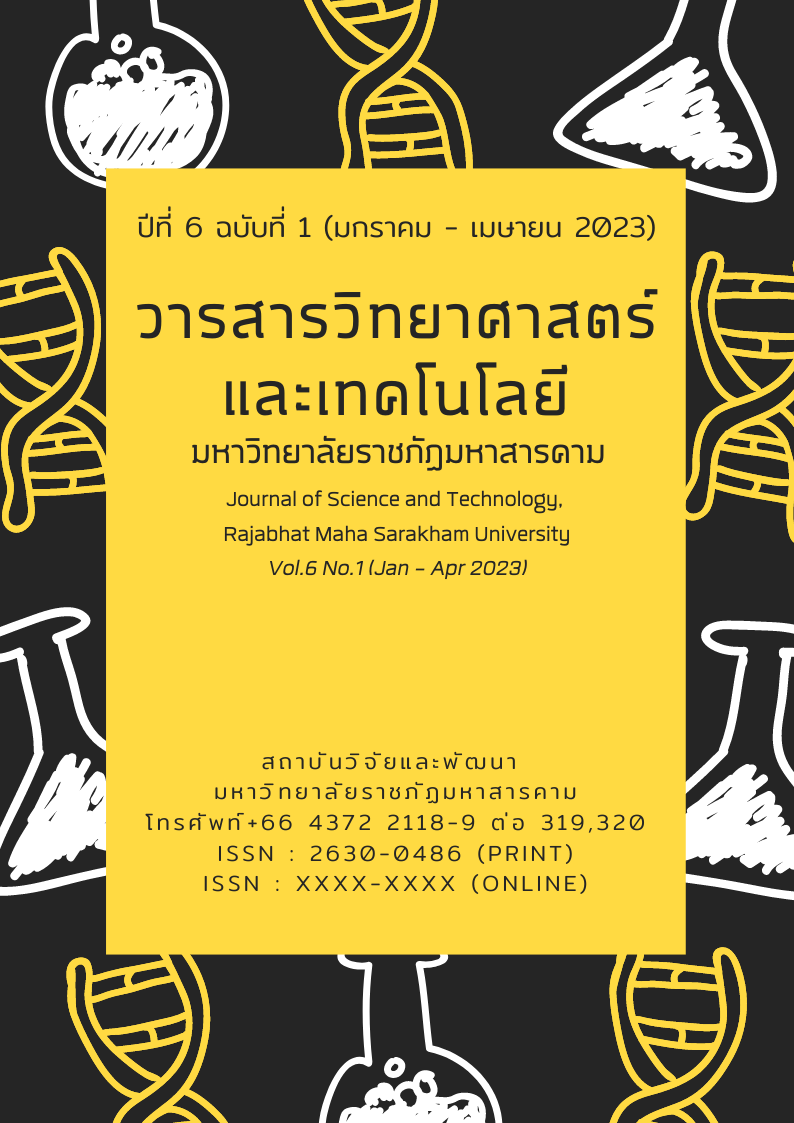Mathematical Model for Forecasting the Number of Aging Societies in Pathum Thani Province
Keywords:
Mathematical Model, Forecasting, Aging SocietyAbstract
The purpose of this research was to construct the mathematical model for forecasting the number of aging societies in Pathum Thani province. The data was collected from the Bureau of Registration Administration, Department of Provincial Administration from 1993 to 2022, 30 values, divided into two sets. The first set from 1993 to 2017, 25 values were used for the modeling by double moving average method, Simple exponential smoothing method, Holt’s exponential smoothing method, Brown’s exponential smoothing method and Box-Jenkins method. The second set from 2018 to 2022, 5 values were used for checking the accuracy of the forecasting models via the determination of the lowest mean absolute percentage error (MAPE) and root mean square error (RMSE). The results found that Brown’s exponential smoothing method was the most appropriate method (MAPE = 7.933, RMSE = 1,318.879). In terms of forecasting methods, the mathematical model for forecasting the number of aging societies in Pathum Thani province was .
References
Li, Y. & Liu, Y. (2021). Number regression and prediction of Chinese seniors based on the ARIMA model. The Frontiers of Society, Science and Technology, 3(6), (68-71).
Manmin, M. (2006). Time series and forecasting. Bangkok: Fourprinting. (in Thai)
National statistical office. (2022). Life expectancy of population. https://data.go.th/ dataset/os_01_00011
Palee, T., & Wongprachan, R. (2020). Forecasting the number of elder in Lamphun. In C. Pakpum (Ed.), Proceeding of the 1st Science technology and innovation conference (pp. 225-232). Chiang Mai: Maejo University. (in Thai)
Suwanwongse, S. (2013). Quantitative forecasting techniques: Time series analysis. Nakhon Pathom: Mahidol University. (in Thai)
Taesombat, S. (2006). Quantitative forecasting. Bangkok: Kasetsart University. (in Thai)
Thanaprach, W. (2011). Forecasting models of number of elder populations in Bangkok metropolitan in the year 2010-2015. Bangkok: Dhurakij Pundit University. (in Thai)
The Bureau of registration administration. (2022). Official statistics registration systems. https://stat.bora.dopa.go.th/stat/statnew/statMenu/newStat/stat/



